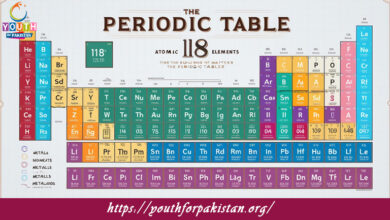Stationary Waves MDCAT MCQs with Answers

Welcome to the Stationary Waves MDCAT MCQs with Answers. In this post, we have shared Stationary Waves Multiple Choice Questions and Answers for PMC MDCAT 2024. Each question in MDCAT Physics offers a chance to enhance your knowledge regarding Stationary Waves MCQs in this MDCAT Online Test.
Stationary Waves MDCAT MCQs Test Preparations
Stationary waves are formed when:
a) Two waves of different frequencies interfere
b) Two waves of the same frequency travel in opposite directions
c) A wave passes through a medium
d) Two waves of different amplitudes interfere
In a stationary wave, nodes are:
a) Points of maximum amplitude
b) Points of zero amplitude
c) Points where waves meet
d) Points of constant phase
The regions of maximum amplitude in a stationary wave are called:
a) Nodes
b) Antinodes
c) Troughs
d) Crests
In a stationary wave, the distance between two consecutive nodes is equal to:
a) Half the wavelength
b) The wavelength
c) Twice the wavelength
d) One-fourth of the wavelength
A stationary wave pattern can be observed in:
a) A vibrating string
b) A traveling sound wave
c) A moving car
d) An echo in a canyon
The second harmonic of a stationary wave has:
a) Two nodes and one antinode
b) Three nodes and two antinodes
c) Four nodes and three antinodes
d) One node and two antinodes
The distance between two consecutive antinodes in a stationary wave is:
a) Equal to the wavelength
b) Half the wavelength
c) Twice the wavelength
d) One-fourth of the wavelength
A stationary wave in a tube closed at one end will have:
a) Nodes at both ends
b) Antinodes at both ends
c) A node at the closed end and an antinode at the open end
d) Antinodes at both ends
The harmonic series of a stationary wave in a tube open at both ends includes:
a) Only odd harmonics
b) Only even harmonics
c) Both odd and even harmonics
d) Fundamental mode only
The fundamental frequency of a stationary wave on a string is affected by:
a) The tension in the string
b) The density of the medium
c) The amplitude of the wave
d) The temperature of the medium
The wavelength of the fundamental frequency in a tube closed at one end is:
a) Twice the length of the tube
b) Four times the length of the tube
c) Equal to the length of the tube
d) Half the length of the tube
In a stationary wave pattern, the distance between two adjacent nodes or antinodes is:
a) One wavelength
b) Two wavelengths
c) Half a wavelength
d) One-fourth of a wavelength
The number of antinodes in the third harmonic of a stationary wave is:
a) Three
b) Two
c) Four
d) Five
Which of the following statements is true for stationary waves on a string?
a) The amplitude is maximum at the nodes
b) The amplitude is minimum at the antinodes
c) Nodes are points of minimum amplitude
d) Antinodes are points of zero amplitude
A stationary wave pattern in a tube open at both ends will have:
a) Nodes at both ends
b) Antinodes at both ends
c) Nodes at one end and antinodes at the other end
d) Nodes in the middle
The frequency of the third harmonic of a stationary wave is:
a) Three times the fundamental frequency
b) Twice the fundamental frequency
c) Four times the fundamental frequency
d) Five times the fundamental frequency
The wavelength of the second harmonic in a tube closed at one end is:
a) Twice the length of the tube
b) Equal to the length of the tube
c) Four times the length of the tube
d) Half the length of the tube
The harmonic number of a stationary wave is related to:
a) The amplitude of the wave
b) The speed of the wave
c) The number of nodes and antinodes
d) The density of the medium
A standing wave pattern in a tube open at both ends will have:
a) Nodes at the ends
b) Antinodes at the ends
c) Nodes in the middle
d) Antinodes in the middle
In the second harmonic of a stationary wave, the number of nodes is:
a) Two
b) Four
c) Three
d) Five
The amplitude of a stationary wave is:
a) Maximum at the nodes
b) Zero at the antinodes
c) Zero at the nodes and maximum at the antinodes
d) Maximum at the nodes and zero at the antinodes
In a tube closed at one end, the fundamental frequency is characterized by:
a) One node and one antinode
b) Two nodes and one antinode
c) One antinode at each end
d) Two nodes and two antinodes
In a stationary wave pattern, the points where the amplitude is zero are known as:
a) Nodes
b) Antinodes
c) Crests
d) Troughs
The speed of sound in a medium can affect the:
a) Wavelength of stationary waves
b) Amplitude of stationary waves
c) Number of harmonics in stationary waves
d) Frequency of stationary waves
The formation of standing waves on a string is dependent on:
a) The frequency of the wave
b) The amplitude of the wave
c) The length of the string
d) The tension in the string
The fundamental frequency of a stationary wave in a string is determined by:
a) The tension in the string
b) The density of the medium
c) The length of the string
d) All of the above
The stationary wave pattern in a tube closed at one end is:
a) Fundamental mode with one node and one antinode
b) Fundamental mode with two nodes and one antinode
c) Second harmonic with two nodes and two antinodes
d) Third harmonic with three nodes and three antinodes
In a vibrating string, the points where there is no vibration are called:
a) Nodes
b) Antinodes
c) Crests
d) Troughs
For a given medium, the frequency of the nth harmonic is:
a) n times the fundamental frequency
b) n divided by the fundamental frequency
c) n squared times the fundamental frequency
d) n minus the fundamental frequency
The harmonic series of a stationary wave in a string fixed at both ends starts with:
a) One node and one antinode
b) Two nodes and one antinode
c) Two nodes and two antinodes
d) One node and two antinodes
In a tube open at both ends, the fundamental wavelength is:
a) Four times the length of the tube
b) Twice the length of the tube
c) Equal to the length of the tube
d) Half the length of the tube
In a stationary wave, the antinodes are located:
a) Where the amplitude is zero
b) At equal distances from the nodes
c) At the fixed ends of the string
d) At random points along the wave
The third harmonic of a stationary wave has:
a) Three nodes and three antinodes
b) Two nodes and three antinodes
c) Four nodes and three antinodes
d) Five nodes and four antinodes
The formation of standing waves is an example of:
a) Interference of waves
b) Refraction of waves
c) Diffraction of waves
d) Reflection of waves
The frequency of the second harmonic of a stationary wave on a string is:
a) Double the fundamental frequency
b) Half the fundamental frequency
c) Three times the fundamental frequency
d) Four times the fundamental frequency
In the case of a string fixed at both ends, the length of the string affects:
a) The fundamental frequency only
b) The wavelength of all harmonics
c) The amplitude of the wave
d) The speed of the wave
The fundamental frequency of a stationary wave pattern is also known as:
a) First harmonic
b) Second harmonic
c) Third harmonic
d) Fourth harmonic
For a tube closed at one end, the length of the tube is related to the wavelength of the fundamental frequency by:
a) Wavelength = 4 times the length of the tube
b) Wavelength = 2 times the length of the tube
c) Wavelength = equal to the length of the tube
d) Wavelength = half the length of the tube
If you are interested to enhance your knowledge regarding Physics, Chemistry, Computer, and Biology please click on the link of each category, you will be redirected to dedicated website for each category.





